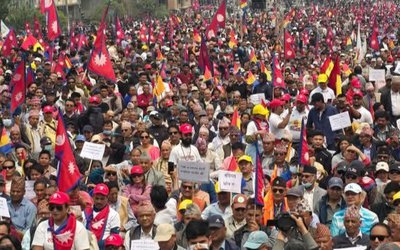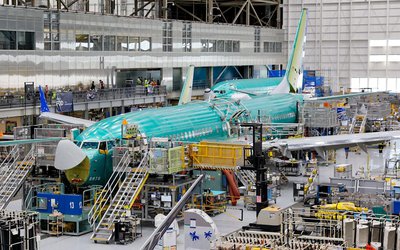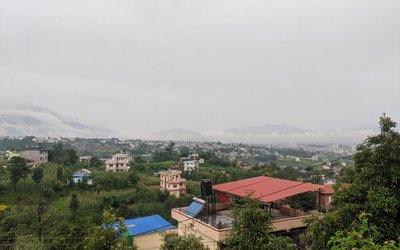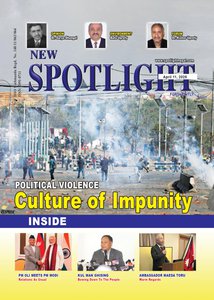
With the increasing pollution and the city being covered in a thick layer of smog of dust and smoke, Kathmandu’s Air Quality Index (AQI) has been fluctuating in the unhealthy range. With majority of the people complaining about eye, nose and throat irritation the effects of the increasing pollution is evident among all ages.
Vehicle’s toxic emissions, harmful smoke from brick kilns, burning of hazardous garbage, plastic and agricultural wastes within the valley are seen as the major culprits of the increasing air pollution. In recent days the smoke from the wildfires around the valley’s vicinity, in addition to the lack of rainfall, have made matters worse. Kathmandu valley, surrounded by high hills and forming a bowl shape, experiences limited air circulationresulting in stagnant air trapped in by the city’s unique topography.
This poses a significant health risk to the population especially the ones with respiratory conditions, people belonging to the older age group and the children. Children are more vulnerable as their developing lungs, brain and the immunity system are especially vulnerable to the harmful effects of air pollution. Additionally, children breathe faster and more often through their mouth; taking in more pollutants than adults.
According to IQAIR, an organization that measures the real-time pollution of 101 cities in the world, the Kathmandu valley’s Air Quality Index (AQI) read 265 at 11:06 am on Wednesday 9th April 2025. However, after two to three significant downpours in the past few days, Kathmandu valley has seen a noticeable improvement in the air quality. As of 14th April 2025, the AQI that has constantly remained in the ‘unhealthy’ range has now dropped to 88 falling within the ‘moderate’ category.
While rains have brought temporary relief, the improvement may be short-lived if urgent action is not taken to address the systemic issues that are at the root of this problem. The persistence of PM2.5 concentration which is currently 5.8 times the World Health Organization (WHO) annual PM2.5 guideline value is a stark reminder of this situation. Particulate Matter (PM) are the fine particles, less than 2.5 micrometers in diameter, that are most dangerous to human health because they can penetrate deep into the respiratory system, reaching the lungs and even entering the bloodstream.
Air pollution is no longer just an environmental issue, it is a public health emergency. Kathmandu’s battle with air pollution is no longer something that we can brush off as a part of normal ‘city life’. It is not just about smog or the statistics, it is about people’s lives and their wellbeing. Ultimately, addressing Kathmandu’s air pollution crisis demands a collective, multi-sectoral effort. It is not enough to focus on one solution; a comprehensive, integrated approach, with collaboration between the government, industries, communities and individuals. By ensuring effective policy enforcement, investing in clean energy transitions, improving waste management and enhancing urban planning, Kathmandu can significantly reduce its pollution levels and move toward a healthier, more sustainable future for its citizens.
(Kharel holds a master’s degree in Development Studies from Kathmandu University. She writes on the issues of gender and development
- Nepal's Minister for Foreign Affairs highlights LGBTQIA+ achievements at a global forum
- Jan 06, 2025
- Micro-aggressions in Daily Life: Subliminal Discrimination against LGBTQI++ Communities
- Nov 16, 2024
- Nepal Makes History with First Female Chief Secretary and Shortest Tenure
- Aug 18, 2024
- Navigating the Climate Crisis: Harnessing Indigenous solutions for a sustainable future
- Aug 04, 2024
- Finding Balance: A Modern Approach to Life's Challenges
- Jul 18, 2024













